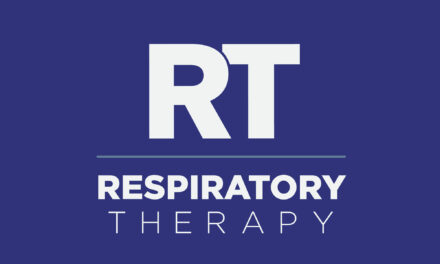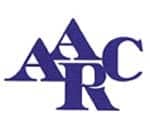Pediatric patients and area residents are learning to become involved in their own respiratory health with the help of RTs, nurse practitioners, and physicians at St Louis Children’s Hospital.
By Seleen Street Collins
At St Louis Children’s Hospital, 225,000 children are admitted each year, and the majority are acutely ill. There has been such a significant increase in the number of acutely ill children seen each year at the 235-bed facility that a major expansion is planned for the next 3 to 5 years, which will increase the number of beds in the pediatric intensive care unit (ICU) from 28 to 34 and in the neonatal ICU from 52 to 75.
“Other facilities in the region refer their most critical cases to the hospital. In addition, we see a large number of children who come to the emergency department for asthma care—children from the inner-city neighborhoods, especially,” notes Donna Petersen, RRT, who has been at St Louis Children’s Hospital for 13 years.
Six of the facility’s 40 RTs serve on the transport team, bringing patients in by helicopter. These RTs accompany the airborne patients to handle difficult ventilation issues and to administer nitric oxide when needed during transfer.
The nationally recognized facility, which recently was named one of the 10 best children’s hospitals by Child magazine, is known for the many lung transplantations it performs each year. The transplant recipients range in age from 2 months to 18 years, and it can take 2 to 6 months for the transplantation to occur.
“Many of the children have cystic fibrosis or pulmonary hypertension, and the RTs administer ventilator therapy to get them through the pretransplantation period and then administer postoperative respiratory care,” explains Petersen.
Within the hospital, RTs are busy with bedside care, administering medications, educating patients and their families about aspects of self-care such as peak flow measurement, and documenting education sessions. Notes Petersen, “Both on the floor and in the ICUs, we are typically caring for children with cystic fibrosis, neuromuscular disorders, respiratory syncytial virus infection—if they need help to clear the lungs, we are there to administer care, from working with noninvasive ventilation and home ventilation patients on the floor all the way to critical premature infants and children on ventilators in the ICU.”
Because the hospital is associated with the Washington University School of Medicine in St Louis, the RTs also participate in research studies. In an ongoing, multisite study of respiratory distress syndrome, the RTs are analyzing the effect of early and prolonged use of prone positioning of patients during ventilation. The study will be completed in approximately 1 year. In another study, of clinical protocol (Bjo5 Oxepa), RTs are investigating the outcomes for critically ill children with lung injury. RT staff members also are developing weaning protocols for ventilatory support in the ICUs.
“Currently, the department is involved in examining processes involving admission of asthma patients: for instance, how quickly the first medications are given,” Petersen said. “The quicker we work with them, the quicker they recover. We have been working on this for about 18 months now, and our goal is better care for the patients, from the emergency department, to the floor, to the pediatric ICU.”
Another assessment with which the RTs are involved is the satisfaction of patients and their families with the care received at the hospital. Each week, 10 names are randomly chosen from among the recently discharged patients, and data are collected from the parents by means of a phone survey. “The survey is short and poses questions such as whether the parents understood the care administered by the RTs during the child’s hospitalization. This information is important to us because one of our primary goals is for both the patient and the family to be satisfied with the care we provide.”
Community Outreach
RTs assist with asthma control education (ACE) classes that are taught throughout the city. “We hold eight ACE classes per year for children with asthma and their families to attend together. Primary care physicians will refer them for these sessions, usually when they need help with asthma control and in learning an action plan,” says Petersen.
The hospital’s RTs also are committed to the Healthy Lungs Program, which is held in association with respiratory care week in the autumn. The RTs see this as an important opportunity to reach out to the community, and many have been involved in the effort since its inception 13 years ago. “We focus on fourth- through six-graders, teaching 400 to 500 per year about how to keep their lungs healthy,” says Petersen. The staff holds a contest in which students design posters about the importance of lung health, and up to 200 posters have been submitted in the yearly event.
“There is a very wide scope of knowledge at the hospital, and a lot of the caregivers are specialists in pediatrics,” Petersen says. “I think there is more protectiveness among caregivers in pediatrics, so developing a team approach to identifying what we can do for a child and his or her family can be challenging. We all want to do what is right for the kids. What is best for our patients is creating rapport among the physicians, residents, nurses, nurse practitioners, and RTs, which allows everyone to contribute from their own knowledge base and thus build a team with mutual trust and respect.”
Taking Aim at Asthma
The St Louis Children’s Hospital asthma programs involve a tightly integrated staff of physicians and nurses in the Washington University School of Medicine’s Division of Allergy and Pulmonary Medicine, RTs, and AIM (Asthma Intervention Model) nurse practitioners, all working closely together to provide consistent care to patients.
The AIM program was developed by Robert Strunk, MD, of the Division of Allergy and Pulmonary Medicine, on the basis of an interventional tool he had devised in the early 1990s in conjunction with Petersen and other RTs at the hospital. At that time, RTs were working in the emergency department and wanted a better system for asthma patients who presented there. The instrument they and Strunk came up with, called Asthma 1-2-3, is used for focused teaching and discharge planning for children seen for asthma in the emergency department. This tool evolved into the inpatient care pathway for asthma patients and the AIM program.
The RTs began working toward a coordinated approach to asthma care by creating the Asthma Education Committee. As one of its first projects, the committee helped develop a pathway of care and an RT-guided plan for reduction in albuterol therapy. This plan has led to a significant reduction in hospital stay for asthma patients, says Strunk.
The RTs work closely with nurse practitioners, who oversee the AIM protocol. “With use of AIM, the care pathway is in place from the time of admission and progresses through hospitalization and on to discharge,” says Strunk. “The physicians are often busy, so the RTs can drive the progress to the next step by calling the doctor to suggest a decrease in the frequency of albuterol treatment when the time is appropriate. This way, the process goes much more smoothly and efficiently.”
Pediatricians have come to rely on the asthma programs at St Louis Children’s Hospital because of the consistency of care and the educational resources it offers for asthma patients. In addition to what patients and their parents learn with the Asthma 1-2-3 plan in the emergency department and with the AIM program during hospitalization, school nurses as well as families and schoolchildren in the local communities learn about asthma control in the outreach classes taught by RTs and AIM nurses.
Pediatricians and local residents also rely on the hospital’s after-hours answer line, which parents can call during the evenings, weekends, and holidays and have their asthma-related concerns and questions addressed by AIM nurses. About 160 pediatricians subscribe to the service, and 95% allow the nurses to prescribe interventions according to protocol. “This has cut down on the number of admissions of those whose parents call the line,” notes Strunk. “It’s not just inpatients who are learning about asthma control; the educational and outreach efforts have had a ripple effect.”
RTs have had a significant impact on the success of the asthma programs, Strunk believes. “They were the ones who recognized the need years ago to improve the way we manage asthma patient care, and their efforts enable us to move patients through the care pathway in a more expeditious manner. They really deserve a lot of credit.”
RT
Seleen Street Collins is a contributing writer for RT. For more information, contact [email protected].










